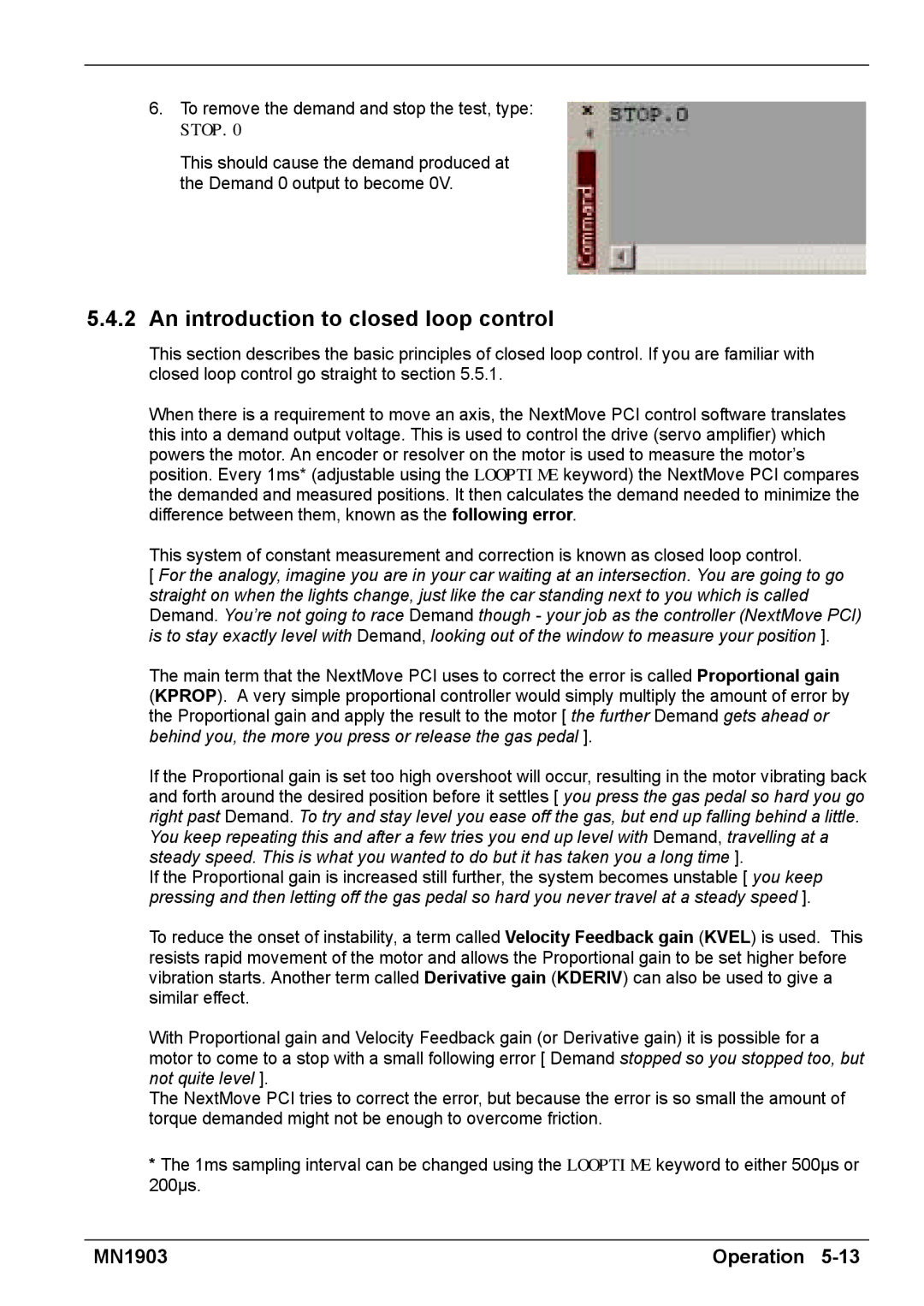
6.To remove the demand and stop the test, type:
STOP.0
This should cause the demand produced at the Demand 0 output to become 0V.
5.4.2An introduction to closed loop control
This section describes the basic principles of closed loop control. If you are familiar with closed loop control go straight to section 5.5.1.
When there is a requirement to move an axis, the NextMove PCI control software translates this into a demand output voltage. This is used to control the drive (servo amplifier) which powers the motor. An encoder or resolver on the motor is used to measure the motor’s position. Every 1ms* (adjustable using the LOOPTIME keyword) the NextMove PCI compares the demanded and measured positions. It then calculates the demand needed to minimize the difference between them, known as the following error.
This system of constant measurement and correction is known as closed loop control.
[For the analogy, imagine you are in your car waiting at an intersection. You are going to go straight on when the lights change, just like the car standing next to you which is called Demand. You’re not going to race Demand though - your job as the controller (NextMove PCI) is to stay exactly level with Demand, looking out of the window to measure your position ].
The main term that the NextMove PCI uses to correct the error is called Proportional gain (KPROP). A very simple proportional controller would simply multiply the amount of error by the Proportional gain and apply the result to the motor [ the further Demand gets ahead or behind you, the more you press or release the gas pedal ].
If the Proportional gain is set too high overshoot will occur, resulting in the motor vibrating back and forth around the desired position before it settles [ you press the gas pedal so hard you go right past Demand. To try and stay level you ease off the gas, but end up falling behind a little. You keep repeating this and after a few tries you end up level with Demand, travelling at a steady speed. This is what you wanted to do but it has taken you a long time ].
If the Proportional gain is increased still further, the system becomes unstable [ you keep pressing and then letting off the gas pedal so hard you never travel at a steady speed ].
To reduce the onset of instability, a term called Velocity Feedback gain (KVEL) is used. This resists rapid movement of the motor and allows the Proportional gain to be set higher before vibration starts. Another term called Derivative gain (KDERIV) can also be used to give a similar effect.
With Proportional gain and Velocity Feedback gain (or Derivative gain) it is possible for a motor to come to a stop with a small following error [ Demand stopped so you stopped too, but not quite level ].
The NextMove PCI tries to correct the error, but because the error is so small the amount of torque demanded might not be enough to overcome friction.
*The 1ms sampling interval can be changed using the LOOPTIME keyword to either 500µs or 200µs.
MN1903 | Operation |
